“My Place to Play” promotes the importance of play; increases developmental activities for babies including tummy time and sensory development; and encourages parent-child bonding.
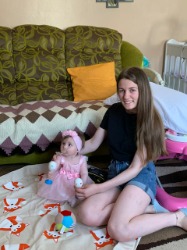 Parents of babies living in international protection accommodation told CYPSC that “My Place to Play” made it easier for them to play with their baby as it provided a clean, comfortable, safe, large space with plenty of stimulating and attractive toys to support baby's development and to have fun!
Parents of babies living in international protection accommodation told CYPSC that “My Place to Play” made it easier for them to play with their baby as it provided a clean, comfortable, safe, large space with plenty of stimulating and attractive toys to support baby's development and to have fun!
The "My Place to Play" for families living in International Protection Accommodation Project was delivered between May and September 2020 and is a collaboration between Children and Young People’s Services Committees (CYPSC) and the International Protection Accommodation Service (IPAS) at the Department Children, Equality, Disability, Integration and Youth [1] with support from the Children’s Rights Alliance and the Katharine Howard Foundation, with funding from Oakfield Trust and from CYPSC and skilled expertise from the Early Learning Initiative.
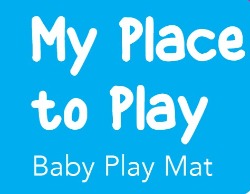 Working through and overcoming the multiple challenges thrown up by Covid-19, a multi-agency Project Oversight Group comprising 5 organisations collaborated to ensure successful delivery of this valuable family support and early childhood development resource to 248 families living in 47 international protection accommodation centres across Ireland.
Working through and overcoming the multiple challenges thrown up by Covid-19, a multi-agency Project Oversight Group comprising 5 organisations collaborated to ensure successful delivery of this valuable family support and early childhood development resource to 248 families living in 47 international protection accommodation centres across Ireland.
“Everyone was very concerned about babies’ development, ability to play, growth and what it (Covid-19) would do to them such as regress socially; which is happening to children at all levels with Covid.”
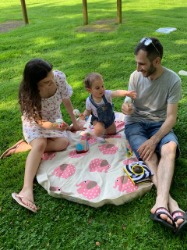 While the aim of the Project was to promote the importance of play, increase developmental activities for babies, and encourage parent-child bonding, the impacts of the Project were more far-reaching. The "My Place to Play" equipment created a familiar space for babies to play not only encouraging baby's development but also creating a space for babies which was their own. This helped to reassure parents/guardians that their baby was playing and developing in a safe and healthy way and it helped parents/guardians interact and bond with their babies, occupy their babies and helped relieve stress.
While the aim of the Project was to promote the importance of play, increase developmental activities for babies, and encourage parent-child bonding, the impacts of the Project were more far-reaching. The "My Place to Play" equipment created a familiar space for babies to play not only encouraging baby's development but also creating a space for babies which was their own. This helped to reassure parents/guardians that their baby was playing and developing in a safe and healthy way and it helped parents/guardians interact and bond with their babies, occupy their babies and helped relieve stress.
One parent explained
“My baby looks at himself in the mirror and he laughs, he sings with the maracas, he looks at the drawings on the mat while talking, sometimes he shouts.”
Other parents said about "My Place to Play"
“I can get down on the floor and play with her (baby) we have great fun.”
“I liked that it can be folded and also used as a bag. My baby recognises the mat and he knows he will get toys and its play time... very happy.”
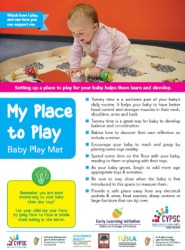 "My Place to Play" Project also helped staff working in accommodation centres to engage with parents/guardians about the importance of play and tummy time in an informal and non-judgmental way. It also helped practitioners in other aspects of their work with families with small children and facilitated the development of positive relationships between staff and parents/guardians. This enabled parents/guardians to seek information and advice on other child development and family-related issues and supported practitioners to address relevant issues.
"My Place to Play" Project also helped staff working in accommodation centres to engage with parents/guardians about the importance of play and tummy time in an informal and non-judgmental way. It also helped practitioners in other aspects of their work with families with small children and facilitated the development of positive relationships between staff and parents/guardians. This enabled parents/guardians to seek information and advice on other child development and family-related issues and supported practitioners to address relevant issues.
“It’s such a nice way to encourage tummy time, play time and a very positive way to engage parents with these issues.”
A review of the implementation and outcomes of this "My Place to Play" Project found that the "My Place to Play" Project is an impactful project model that could offer sustainable mainstream family support to families living in accommodation with limited space; for example, for families living in homeless hubs or temporary accommodation such as refuges. The Project could be adopted by services supporting the development of babies in their crucial formative years and by other services that provide accommodation to families with babies.
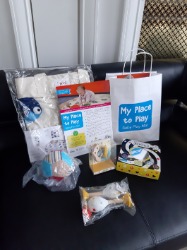 As the My Place to Play Project is aligned with the national outcomes outlined in “Better Outcomes Brighter Futures the National Policy Framework for Children and Young People” and in the Aistear Curriculum Framework it has the capacity to positively impact on child development in the general population.
As the My Place to Play Project is aligned with the national outcomes outlined in “Better Outcomes Brighter Futures the National Policy Framework for Children and Young People” and in the Aistear Curriculum Framework it has the capacity to positively impact on child development in the general population.
“I feel that it works brilliantly as it is an early intervention that can be used with any parent regardless of culture or background.”
A Report on the Review of the “My Place to Play” for families living in International Protection Accommodation Project and a Summary Report of the Review findings have been produced. Some key recommendations from the Project Review include
- My Place to Play Project should be continued into the future for families living in international protection accommodation to support realisation of the draft National Standards for Direct Provision Centres, i.e. Standard 4.5: The accommodation centre has adequate and accessible facilities, including dedicated child friendly, play and recreation facilities.
- My Place to Play Project should continue to be replicated for other families living in accommodation with limited space such as families living in homeless hubs and emergency accommodation.
- The Department of Children, Equality, Disability, Integration and Youth and the Department of Health or its designates should consider funding the Project for sustainability.
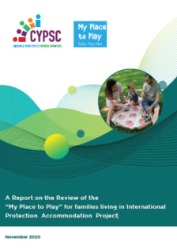
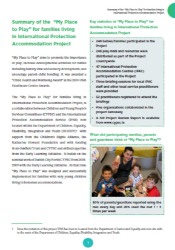
Click here to see the "My Place to Play" suite of resources.
For queries contact cypsc@tusla.ie
For more CYPSC news Click here.
NOTES:
[1] At Project initiation IPAS was located within the Department of Justice and Equality. It has subsequently re-located to the Department Children, Equality, Disability, Integration and Youth.
This iteration of “My Place to Play” builds on the seminal work of Dublin City North CYPSCfrom 2018-2019 with the Early Learning Initiative, a local Area Based Childhood project in Dublin Docklands and East Inner City. At that time “My Place to Play” was designed and successfully implemented to promote the development and well-being of very young children living in homeless accommodation that had a limited amount of space available for free movement and play. That formative project received Healthy Ireland funding. “My Place to Play” aims to promote the importance of play; increase developmental activities for babies including tummy time and sensory development; and encourage parent-child bonding. It was awarded a “Child Health and Wellbeing Award” at the 2019 Irish Healthcare Centre Awards.
It is recognised that international protection accommodation is not providing optimum conditions for the healthy growth and development of children and young people. This national project aimed to provide a model of support to families with very young babies living in international protection accommodation.
The “My Place to Play” family support project comprises 3 key elements:
- An interactive briefing session for nominated staff that includes an overview of the project, an introduction to the “My Place to Play” resources and equipment and information on the key messages related to supporting families to use the “My Place to Play” resources.
- A play mat, that doubles up as a fold-away storage bag that includes developmentally stimulating toys such as a mirror, soft ball, maracas, and rattle rings and a tip sheet for parents/guardians.
- Monitoring and review to evaluate the short term impact of the “My Place to Play” Project for families and staff.
Specific to this iteration of “My Place to Play” the Parent Tip Sheet was translated into 15 different
languages, and a Practitioner Guidance note was provided to all practitioners. These resources and a
recording of the Briefing session, that had to be delivered online due to Covid-19 public health restrictions at the time of implementation, are available HERE.. Additionally, the Project
evaluation surveys were translated into 7 languages other than English.